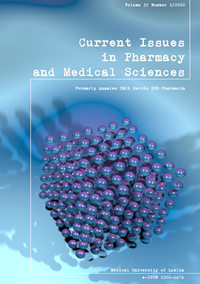Legal protection of the human genome – excessive or disproportionate?
DOI:
https://doi.org/10.2478/cipms-2022-0012Keywords:
human genome, genome sequencing, genome protection, genetic engineering, geneticsAbstract
Throughout the 20th century, life expectancy in developed countries considerably increased from 40 to 70 years. This stemmed mainly from the technological advancements in medicine that have been taking place since the end of the 19th century. Although the development of contemporary clinical medicine is undoubtedly beneficial to public health, it may also entail certain hazards. Hence, both in international and national law systems one can find legal regulations setting the limits of this development and taking into account the principles of public safety in its contemporary understanding. Both the human being as a whole and the human genome are protected de jure. The article attempts to answer the question whether the currently binding genome regulations are excessive or disproportionate. The authors use the dogmatic-legal and the theoretical-legal methods in the study. The article ends with conclusions.
References
1. Jortner J. The Human Genome Project: Legal, social and ethical implications. Proceedings of an International Workshop. The Israel Academy of Sciences and Humanities Jerusalem; 5 July 1995:1-3. [https://www.academy.ac.il/SystemFiles/21628.pdf]
2. Feldman M. The International Background of the Human Genome Project. Proceedings of an International Workshop. The Israel Academy of Sciences and Humanities; Jerusalem, 5 July 1995:4-10. [https://www.academy.ac.il/SystemFiles/21628.pdf]
3. Jasudowicz T. Europejskie standardy bioetyczne: wybór materiałów. Toruń; Tow. Nauk. Organizacji i Kierownictwa – Dom Organizatora; 1998:3-66.
4. [http://libr.sejm.gov.pl/tek01/txt/inne/1997.html.]
5. Kapelańska JE. Klonowanie człowieka i embrionalne komórki macierzyste w świetle prawa, międzynarodowego i porównawczego. Toruń: Wydawnictwo Adam Marszałek; 2006:10.
6. Kurek K. Klonowanie i komórki macierzyste Nauka ekstra. 2011;9:63.
7. Hedgecoe AM. Protection of the human genome and scientific responsibility. J Med Ethics. 1997;23(5):331-2.
8. Singh K. Human genome and human rights: An overview. J Indian Law Institute. 2008;50:67-80.
9. Escors D, Breckpot K, Lentiviral vectors in gene therapy: their current status and future potential. Arch Immunol Ther Exp. 2010;58:107-19.
10. Małecki M, Janik P. Terapia genowa w klinice. Współcz Onkol. 2004;3:119-23.
11. Braciszewski J, Markiewicz WT. Kwasy nukleinowe. Kod genetyczny. http://fundacjarozwojunauki.pl
14. Opposing position: Amelan R. UNESCO panel of experts calls for ban on “editing” of human DNA to avoid unethical tampering with hereditary traits: UNESCO International Bioethics Committee; 2016. https://en.unesco.org/news/unesco-panel-experts-calls-ban-editing-human-dna-avoid-unethicaltampering-hereditary-traits.
15. Cavaliere G. Genome editing and assisted reproduction: Curing embryos, society or prospective parents? Med Health Care Philos. 2018;21(2):215-25.
16. https://tylkonauka.pl/comment/310755
17. https://www.platom.eu/2014/07/10-cech-uwarunkowanych-przez-geny.html
18. https://medlineplus.gov/genetics/gene/maoa/
19. Journal of Laws of 2020, item 442.
Downloads
Published
Issue
Section
License
Copyright (c) 2022 Authors

This work is licensed under a Creative Commons Attribution-NonCommercial-NoDerivatives 3.0 Unported License.


